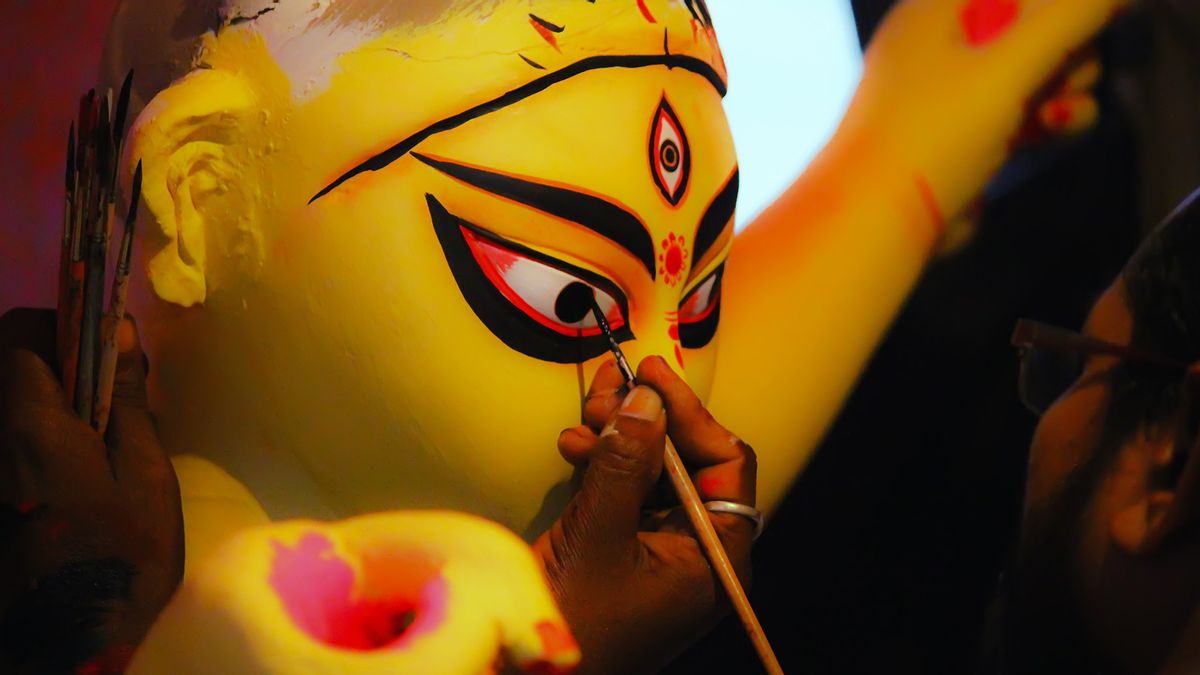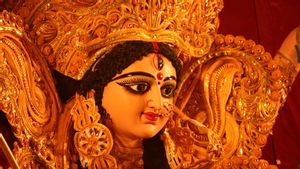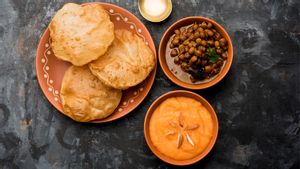Aswiner sarada prate beje utheche alokomonjir,
Dharanir bohirakashi ontorhito meghomala;
Prakritir anatarakashe jagorito jyotirmoyi jaganmatar aagomono-barta,
Anandamoyi moha mayar padodhyani;
Ashima chande beje uthe roop-lok o raso-lok e aane naba bhabomadhurir sanjeeban,
Tai anandita shyamoli matrikar chinmoyi ke mrinmoyi te aabahon…
Aaj chitchaktiroopini bishwajanonir sharodo-sribimondita protima;
Mondire mondire dhyan bodhita…
If you read these lines and didn’t understand a word, don’t worry—I’ve got context for you ahead.
If you read these lines and were filled with nostalgia, then you know what I am talking about.
For 35 years, I have woken up to these lines blaring on the radio at 4 a.m. every year on Mahalaya. For a lot of Bengalis, like me, whether in West Bengal or outside, these lines are synonymous with Mahalaya. They mark the beginning of the countdown to Durga Puja. But what is Mahalaya?
The history of Mahalaya
In the Hindu calendar, Mahalaya marks the end of Pitru-Paksha, and the beginning of Devi-Paksha. It falls five to seven days (depending on the panchang) before Durga Puja. On the last day of Pitru-Paksha, on Mahalaya, temples and the ghats of the Ganges are filled with people offering prayers to their ancestors (tarpan). As the beginning of Devi-Paksha, it marks the beginning of the holiday and get-together plans for the much-anticipated Durga Puja.
As per the scripture of Chandi Path, Mahalaya is the day when Goddess Durga defeated the demon king, Mahishasura—giving her the epithet Mahishasurmardini. As per popular belief, this also marks the day when she begins her journey to her maternal home with her four children from her husband’s home in Mount Kailash. The day she reaches her maternal home marks the beginning of Durga Puja.
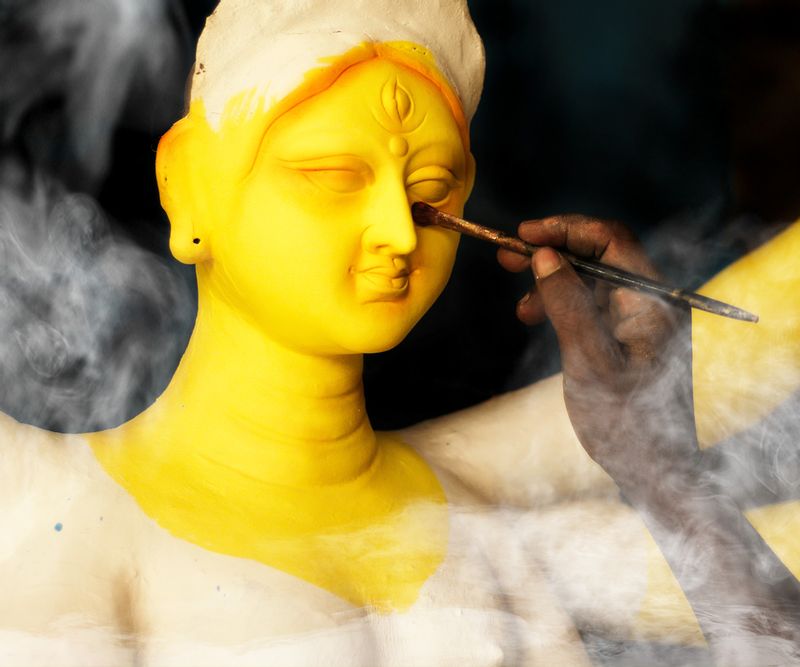
The legacy of Mahalaya
In most households, the story and the celebration of Mahalaya are passed on from one generation to another with the recitation of Mahalaya Mahishasur Mardini—the opening shlokla you read at the beginning. This early morning radio programme—4 a.m. to be precise—has become synonymous with the day.
But the original broadcast plan was never for Mahalaya. The programme first aired in 1931 on Akashvani (All India Radio) in West Bengal on the day of Durga Shashti at 6 a.m. It was only in 1937 that the broadcast was shifted to Mahalaya at 4 a.m. to mark the beginning of Devi-Paksha.
Scripted by Bani Kumar and composed by Pankaj Kumar Mullick, it was voiced by Birendra Krishna Bhadra. Stories tell us that every year the entire team underwent a rigorous, three-month rehearsal before the actual performance. The day of the performance was no less than an offering to the Goddess when everyone turned up in their best clothes and participated in a small puja in the studio before beginning. The programme continued as a live performance till 1966 when it was first broadcasted in its pre-recorded format. Even after it shifted to the recorded format, rehearsals continued, and no artist—senior or junior—could take a day off.
The impact has been such that even an attempt to replace Bhadra with the Bengali superstar Uttam Kumar in 1976 fell flat. In an attempt to revamp All India Radio programmes, Mahalaya Mahishasur Mardini was re-composed, and re-recorded with Kumar replacing the voice of Bhadra. It was also renamed Durga Durgatiharini. But Kumar’s immense fan following and popularity could not save the programme. Bhadra’s rendition was immediately brought back. Ever since then, the man’s voice has tied families and generations together. For the curious souls, you will find Kumar’s rendition on YouTube.
The programme has also been translated into Hindi with a similar orchestration and is broadcast pan-India at the same time. And for those outside the country, a simple YouTube search gives you access to the entire original recording.
The day of Mahalaya
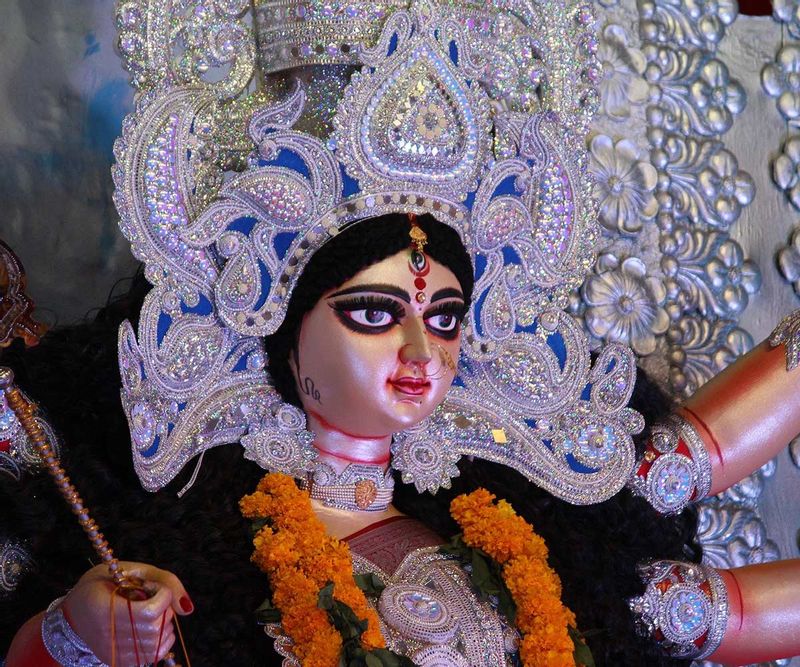
If the ritual on the ghats of the Ganges is not up your alley, there is another ritual that takes place at the same time. The potters of Kumortuli in Kolkata choose the first hour of dawn for the auspicious ChokkhuDaan or offering eyes to the idol of Goddess Durga. The ritual is carried out by the senior-most members of the artisan community. This is the final touch to the idol before she is sent to her maternal home. If you can make it to Kumortuli at that hour and are lucky to witness the performance, you will agree that the feeling cannot be described in words.
You can also choose to spend the day shopping and enjoying Pujo special foods around the city. From your local restaurant to popular food joints and sweet shops, everyone will have something to offer. As it marks the beginning of the countdown to Durga Pujo, you will also find attractive offers on retail purchases all around the city.
Be sure to plan well because the streets will be full. Finding a cab can be a task—take the tram. Yes, they are slow but they are the best way to see this old matriarch of a city prepare to welcome her daughter home.
What does Mahalaya mean for Gen Z?
The 4 a.m. ritual is fading away fast. A friend once said that it is an ‘ungodly’ hour to wake up. Irony much! But Gen Z cannot be discounted in its enthusiasm. You may not hear every neighbour listening to the radio programme nowadays, but Gen Z knows their Mahalaya.
“I don’t wake up for the radio programme but I listen to the recording on YouTube every year. It is like a habit,” says Ishan Goswami, a first-year student at Jadavpur University. Echoing the sentiment, Anushka Biswas, a final year student at Ashutosh College says, “Since my grandmother listens to the programme every year, I don’t have much choice. For me, it is less about the programme and more about spending those few hours with my family.”
Mahalaya is also proving to be a good excuse for the youngsters to plan a trip around the city. “Usually, it is difficult for me and my friends to catch up because of class timings. Last year, we could hardly meet during the Pujo days because of the pandemic. But this year we have planned to meet up early in the morning (not before 10 a.m.) and eat our way around all our favourite food spots in the city,” says Shubhashish Dutta, a class 12 student.
Whatever may be the reason, Mahalaya continues to be the day that turns anglicized Bengalis and new generation Bongs all across the globe into true-blue Bangali. If you want to see us in our full spirit, mark your calendar for October 6, 2021.
See you then!


